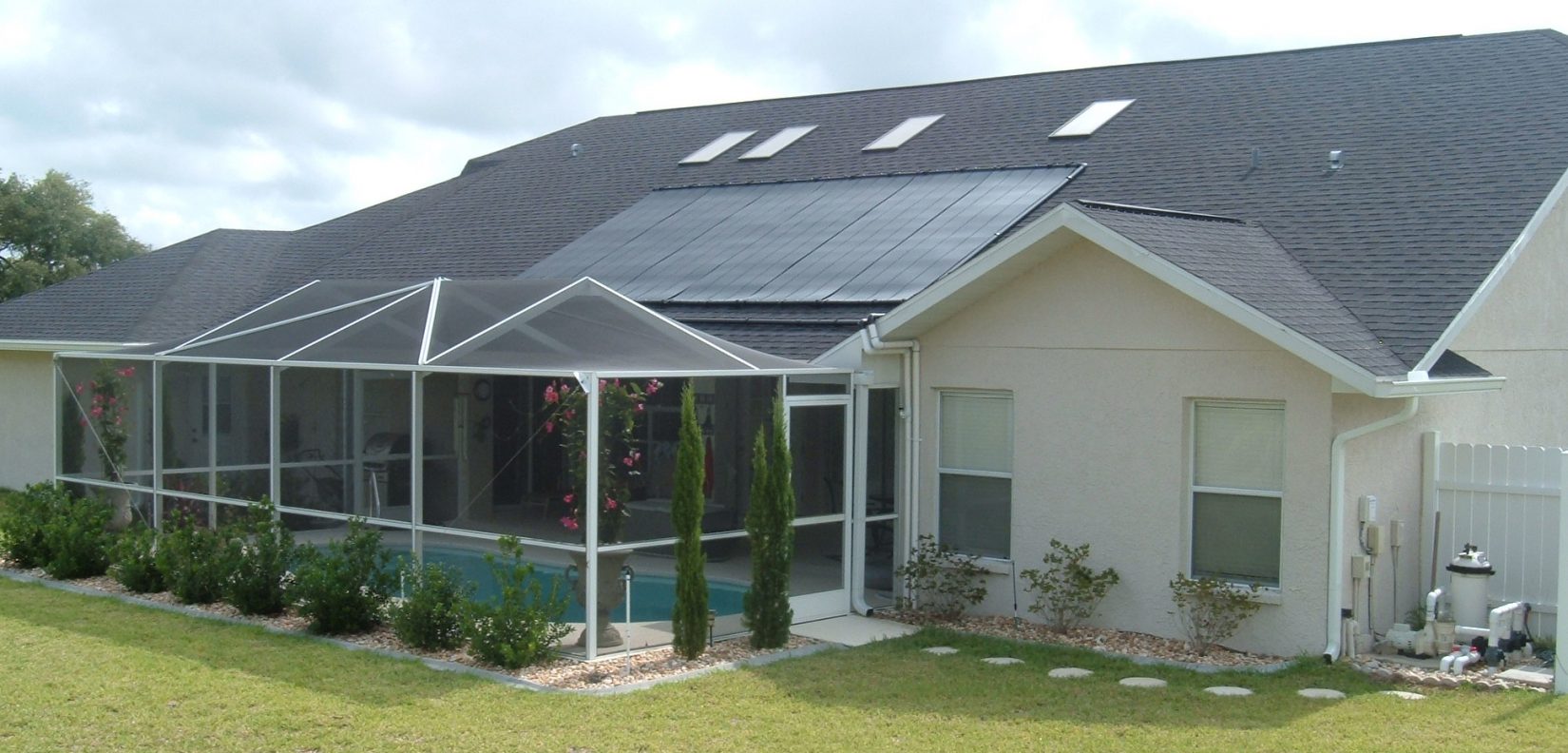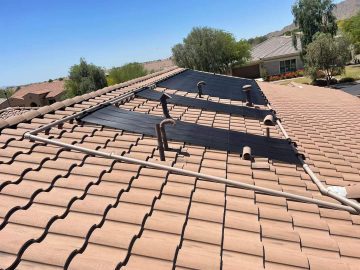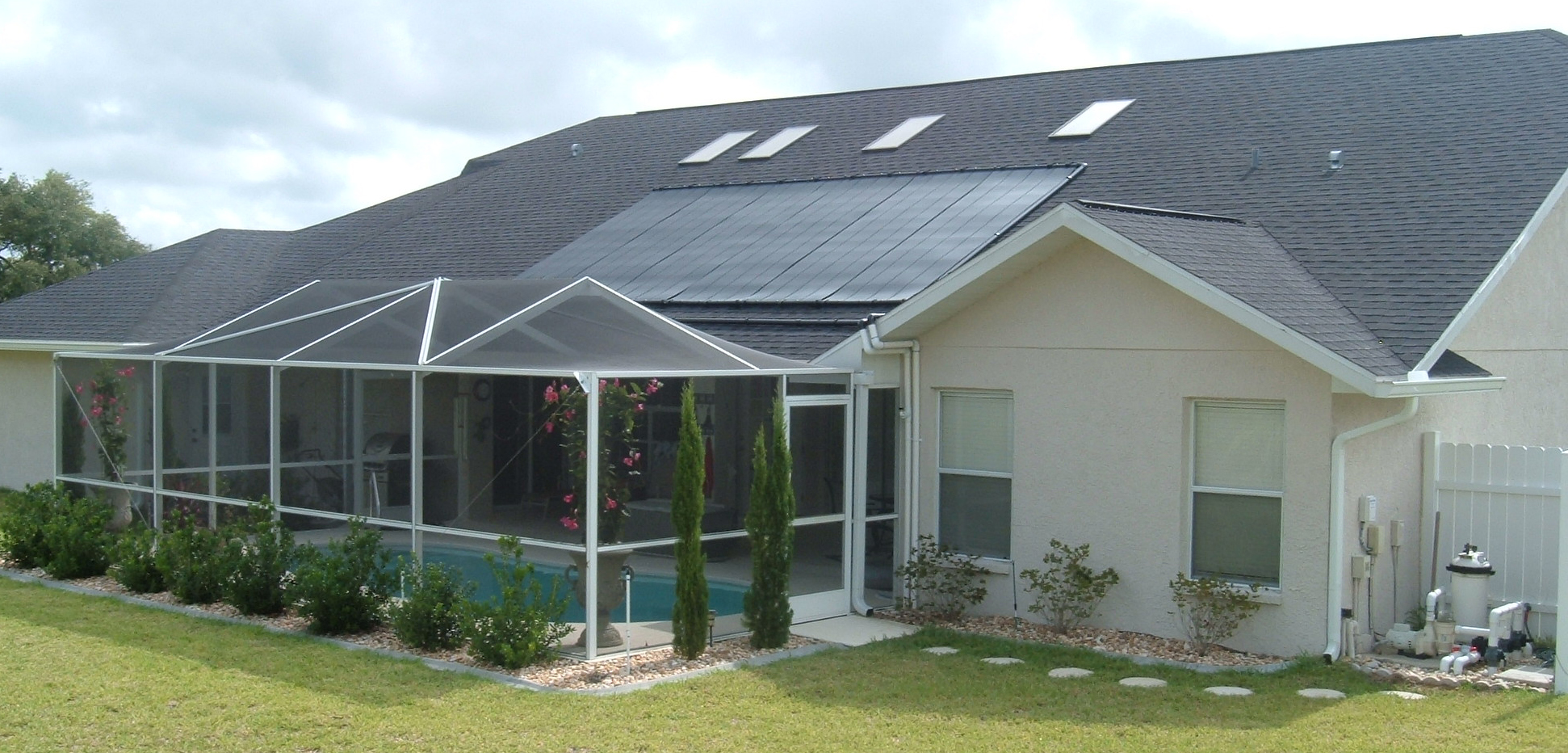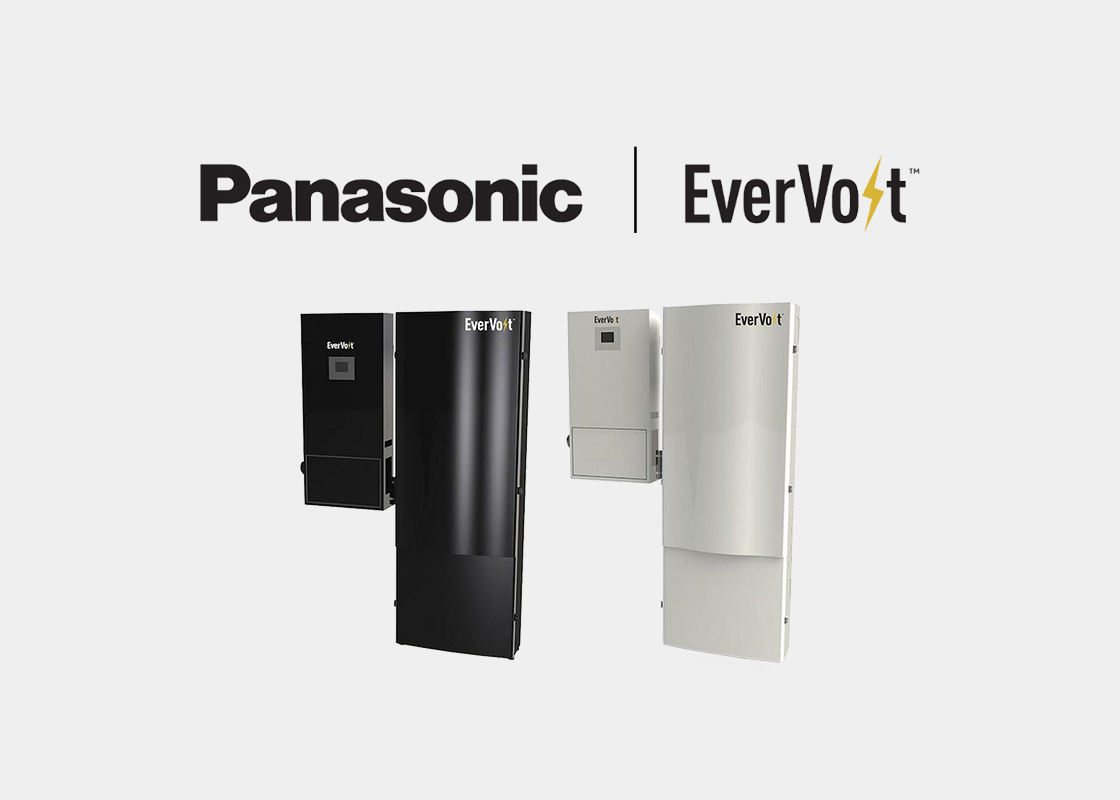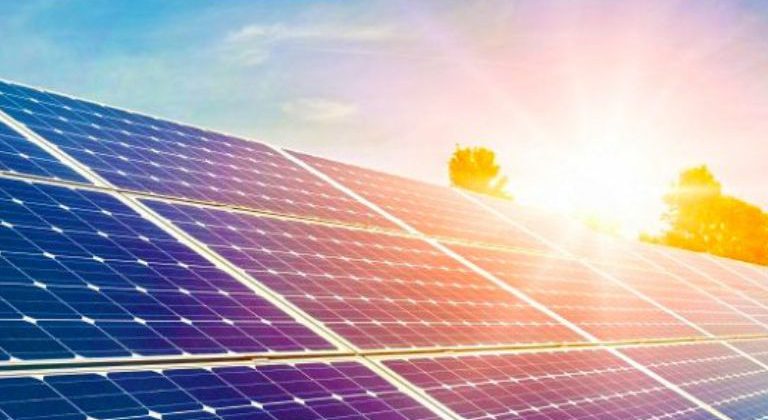With the recent rise in power rates, limited supply from manufacturers on electric pool heat pumps and an increase in people working from home, there has never been a better time to consider adding a solar pool heating system.
By adding this feature to your existing pool, you can lower your electric bill and extend your swimming season with warmer water throughout the year that’s been heated by the sun.
But if you’re considering a solar pool heating system for your home, you might have a few questions first.
What is the size of the system?
Where would it be located?
Is it even right for my needs?
All of these are valid questions and should be answered prior to you making a decision. That’s why UMA Solar has put together some helpful tools and tips for performing your own solar pool site survey, which will help you understand and analyze if a solar pool heating system is right for your home, pool, and roof.
Whether you’re looking to have a system installed or just want some educational information about parts and the installation process, use this helpful resource before you get started.
Use UMA Solar’s Online Resources to Assess Your Space
The first step you can take is to fill out our Solar Pool Simple Site Survey Form online. This will help you assess your property and understand what to look for.
You can also learn more about how this tool can assist you by listening to our Solar Pool Site Survey Assistance for Homeowners podcast episode on UMA Solar Radio now:
It is our goal to provide you a basic perspective on what is best for your pool and roof. Please note that our trusted dealers and installers will best be able to provide you with exact calculations and measurements.
To get started, here are some of the basics of measuring for your solar pool heating system:
Sizing Your Pool
Let’s get started with sizing your pool. We’ve provided a helpful pool-sizing diagram to the Solar Pool Site Survey Packet to help you understand how to size your pool — whether it’s square, rounded or kidney-shaped. 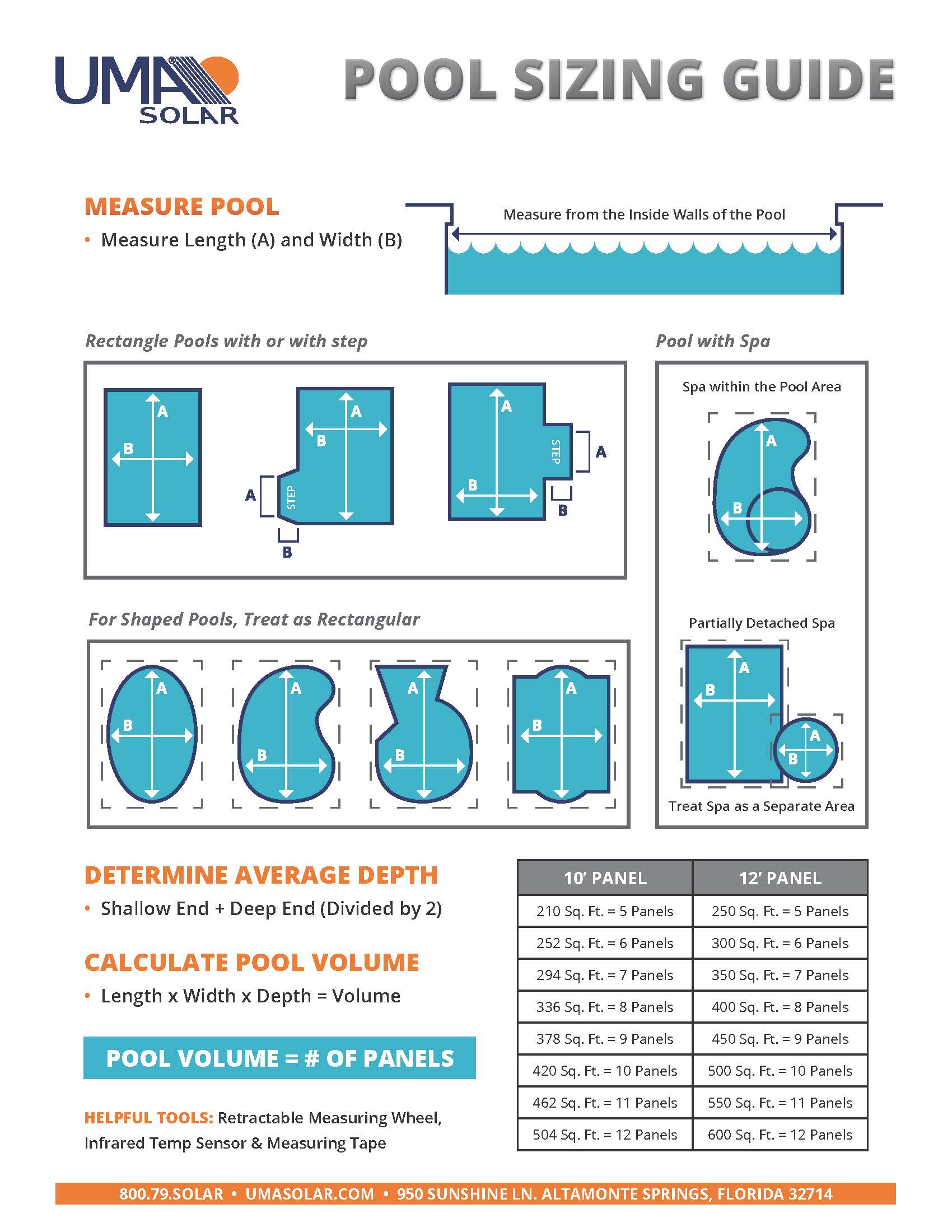
Add this number to the Site Survey Form online.
Estimating the Number of Collectors Needed For Your Solar Pool Heating System
Once you have the size of your pool, here is a simple guide to help you best estimate the number of collectors that would be needed for a warmer pool.
Our solar pool collectors are available in multiple sizes, but the majority of systems are built utilizing either the 4’ x 12’ collectors or the 4’ x 10’ collectors, based on roof sizing. Add this number to the Site Survey Form online.
*Note: For exact sizing, one of our Dealers/Installers will be able to assist.
Roof Size
Now that you know about how many panels you will need, let’s take a look at the roof. A helpful and easy way to do this is to utilize Google Earth’s satellite images with your address.
Your roof plays a significant role in determining whether your property is suitable for home solar collectors. There are several factors to consider when it comes to your roof:
The first thing you should consider is whether your roof has enough space to effectively support solar collectors. The amount of space you need depends on the number of collectors you want to be installed.
A good rule of thumb is to have at least half of your pool’s surface area equal in panel square feet. Example: A 20 × 40 pool has 800 sq. ft. of surface area, so 400 sq. ft. of solar panel would be a good target.
Without access to satellite solar design software that most solar companies have, the best thing you can do is to measure the length of the estimated area from the ground. Again, each panel is 4’ and the average size solar system has (7) panels, so a safe estimate would be a little under 32’ to allow for the PVC pipe connections.
The same holds true for the rise of the panels up the roof. Most systems utilize the 12’ panels, but to allow for a safe installation area and space for the feed and return PVC piping, it would be best to estimate 15’ to 16’. If you do not believe you have that much room up on the roof, then drop to the 10’ panel and allow for 13’ to 14’ for installation. As a safe estimate for increased heat with shorter collectors, extend to (8) 10’ panels and a 36’ length run for the system.
If you have skylights, roof-mounted air conditioner units or vents, know that these can reduce the available surface area for solar pool collectors, but they don’t necessarily make your home unsuitable for solar energy.
Roof Type
Solar pool systems can generally be installed on almost any roof type, including: metal, composite, asphalt shingle roofs, and multiple types of tile.
Roof Condition
A house with a deteriorating or crumbling roof may not be suitable for solar panels. Even if your roof is currently in good shape but will need to be replaced in the next three to five years, it may be in your best interest to do any required roofing work before your solar installation.
Solar pool collectors come with 7- to 12-year warranties, but they can last well beyond that with little to no maintenance required. So you don’t want to remove them unnecessarily if you can prevent that ahead of time.
Roof Orientation
The direction your roof faces affects how much solar radiation your solar system will experience. In the northern hemisphere, it is best to face the solar collectors south because that’s where they will receive the most direct light throughout the day.
In the southern hemisphere, the reverse is true: the collectors should face north. That’s why south-facing roofs are the most ideal for solar installations. However, this doesn’t mean that east- or west-facing roofs can’t be suitable for solar collectors. An east-facing roof will be exposed to a good amount of sunlight in the morning, whereas a west-facing roof will take in more sunlight in the afternoon and evenings, so your solar panels will still receive enough sunlight to generate adequate heat for heating your pool and extending your swimming season!
Roof Pitch
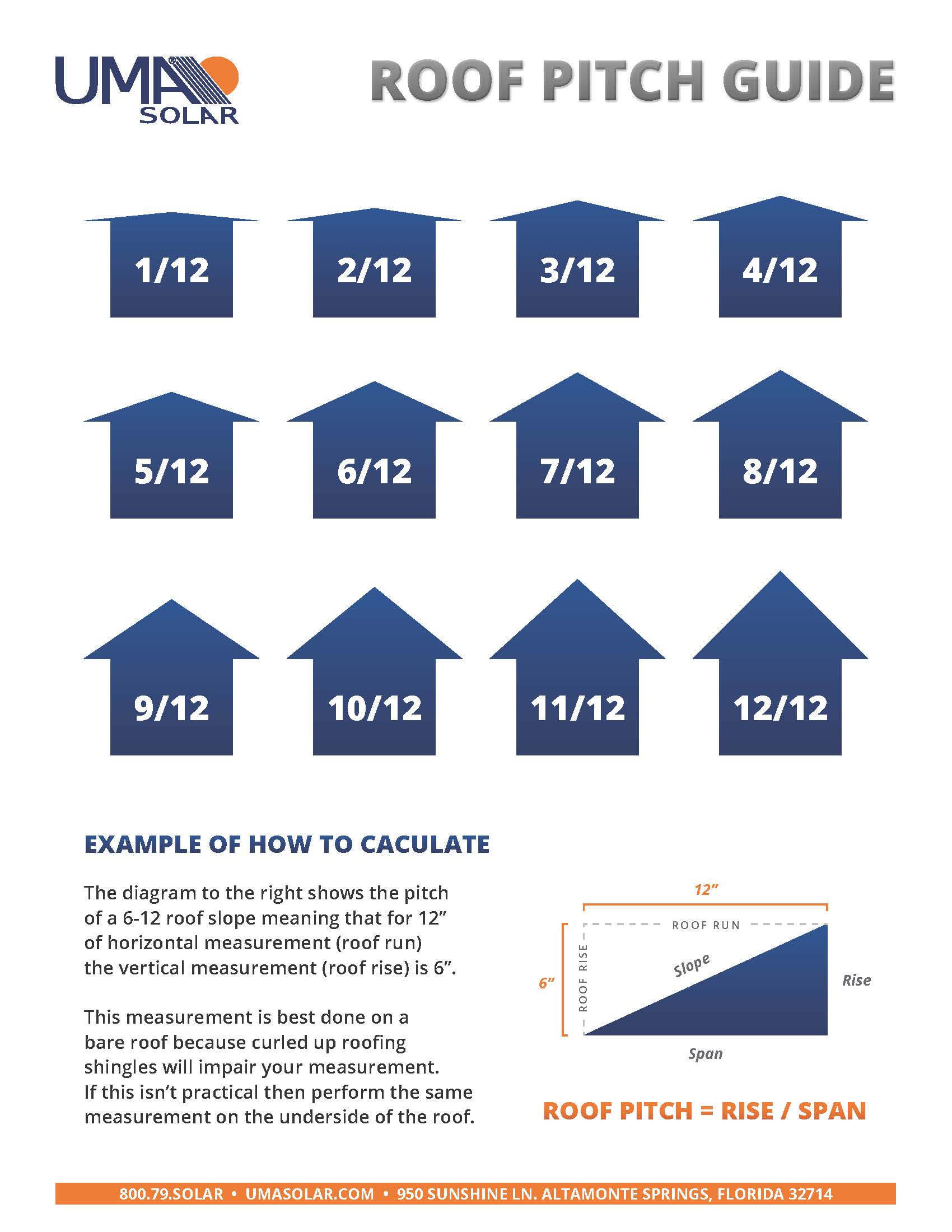
Solar collectors work best when installed on a pitched roof because they are slanted toward the sun. The ideal angle of your roof would be between 20° and 40°, but the slope of the roof can fall outside this range and still perform effectively.
If you have a low-slope roof, it is possible to install solar pool collectors, but we recommend consulting one of our recommended professional solar pool installation companies to handle this.
Shading
Any shading of the solar panels definitely cuts down on the amount of sunlight reaching the panel and warming the water. If you’re surrounded by trees, buildings or other obstacles that shade the roof too much, your house may not be an ideal candidate for solar.
Here is a helpful document to better understand estimating the pitch of your roof.
Once you’ve determined the details associated with your roof, take a moment to fill out the “Roof Information” section of the Site Survey Form online.
Now that you’ve considered the location of the system, the sizing and where it might fit on your roof, now let’s consider where the system will be in relation to the location of your pool equipment (also known as the PAD).
There are a few areas of the pool equipment (PAD) that need to be looked at to determine how to plumb and tie into the system. While completing this section of the Site Survey Form, you’ll need to upload photos of these areas and answer some helpful questions for us to better define what’s needed for your installation. If you would like to have one of our solar installers do this for you, please complete the Find a Dealer Form.
Pool Equipment
A typical equipment pad layout consists of: pumps on one side, filters in the middle, heater on the other side and pipes from the pool coming up from gravel along the side of the equipment pad.
There should be enough spacing between and around equipment for regular service and repairs, including access at the rear of the pumps.
Also found in this area:
- Salt Chlorination Systems
- Shut-Off Valves
- Electrical Timer Box
- Automation Systems
- Electrical Sub Panels
PVC Pipe Considerations
The installation may require that the water flowing from the pump runs parallel to the gutters or even up and over hips and valleys of the roof lines. There also must be a feed and return line of PVC pipe.
While PVC pipe can come in many lengths, an easy formula for calculations would be to consider that for every 10 feet from the pump, you will actually need about 20 feet of PVC pipe. It is recommended that a 2-inch PVC pipe is utilized for the best water flow rate to the panels.
Additionally, there are many PVC pipe fittings that you may need to go over hips and around the overhang and gutters. Taking that into account, use your best judgment at how many 45-degree and 90-degree fittings you might need, as well as how many 10’ PVC pipes or “sticks” you will need.
Start by answering the size of the existing plumbing. While most pools utilize 2” PVC, some have used 1.5” and it will require PVC size reducers/adapters for the connection. Be sure to understand the difference between measuring the outside and inside diameter of the pipe. The outside diameters of PVC pipe:
- 1-1/2″ PVC = 1-7/8″
- 2″ PVC = 2-3/8″
Pool Pump
A pool pump is for keeping the pool water clean. Standstill water enables the growth of unwanted algae, germs and bacteria. When there is proper flow in the water, these specimens fail to create their abode in it.
A running pool pump maintains a constant flow in the water. Whatever chemicals you have dispersed in the pool spreads evenly and reaches every corner.
Single-Speed Pool Pump
A single-speed pool pump is the oldest and the most used pool pump. As the name suggests, you have one single speed. The moment you push the “on” button, it will run at the same speed constantly until you stop. It requires easy maintenance and is very low-cost.
Variable-Speed Pool Pump
The design of the variable-speed pool pump is completely different from the single- and dual-speed pumps. Instead of a static motor speed, the motor is able to change running speeds to generate a variable amount of flow. This allows you to go higher than the speed of the single-speed pump and go lower than the speed the dual one has to offer.
You can control and monitor your solar pool heater using a variety of components, such as a valve actuator, a water pump and a temperature sensor. Some popular models are Hayward’s Goldline Solar Controller and Pentair’s Sun Touch.
The temperature difference between the water and air temperature can be measured and sent to the panels to set the ideal temperature. If the temperature difference is not enough, the controller will close the valve. These controllers can also feature freeze protection and can circulate water to prevent damage caused by freezing.
Some controllers can also control other features of a pool or spa, such as lighting, pumps and heaters. They will also allow you to automatically turn them on or off once you’re done.
With this information, you can now take a moment to fill in the “Pool Equipment” section of the Site Survey Form.
Be sure to add photos to the form fields as prompted so UMA and/or your solar installation professional can best assist you with your system design, parts and installation.
Assess Your Home to See If a Solar Pool Heating System Is Right for You
If you’re ready to get started and have already taken advantage of the Solar Pool Simple Site Survey Form, contact us for more information today.
Solar Pool Simple Site Survey Form Contact UMA Solar
